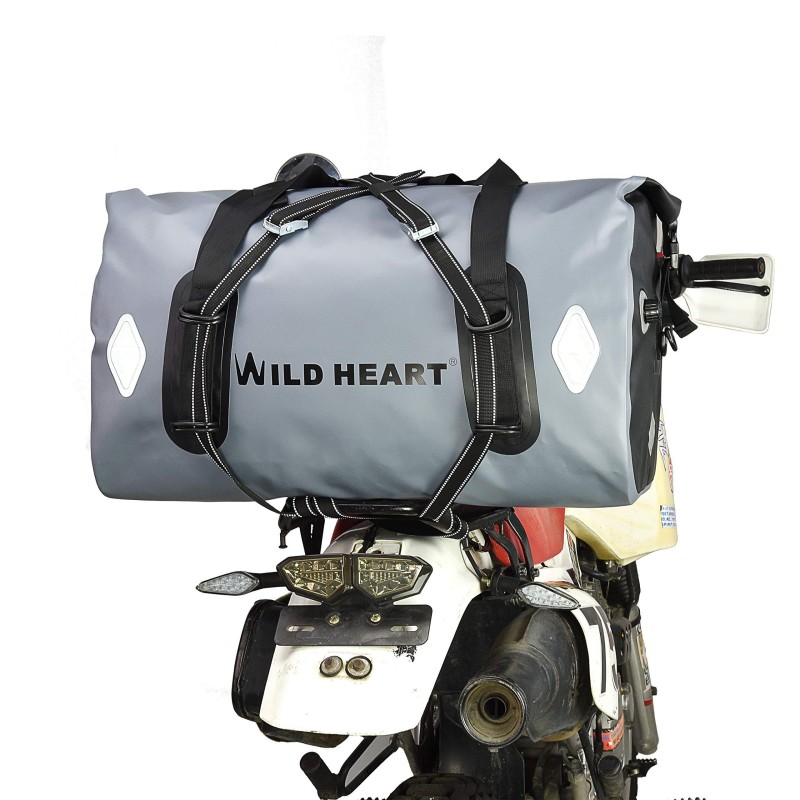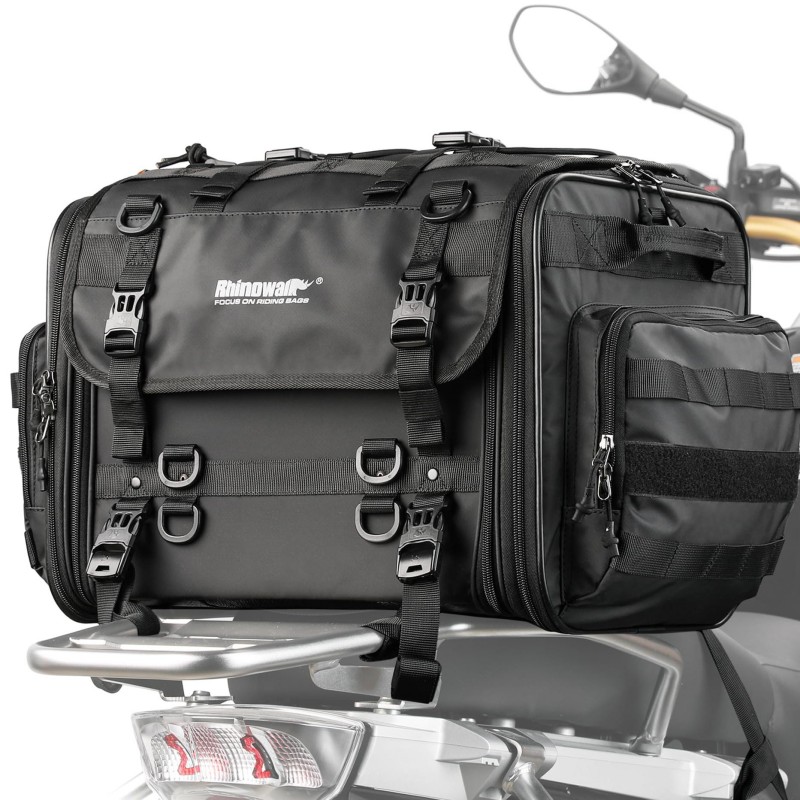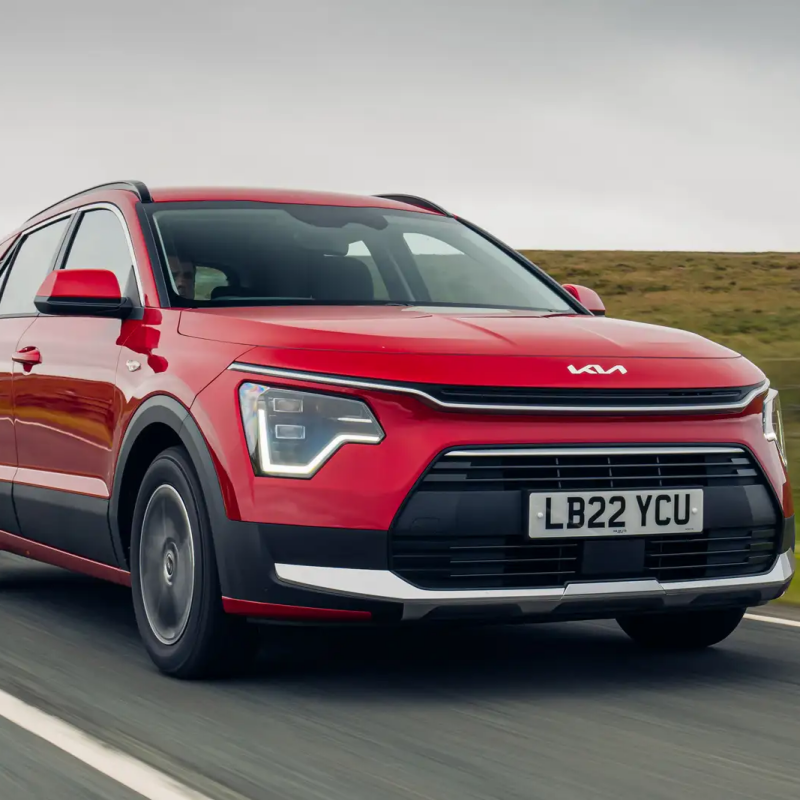Riding a motorcycle or bike can be an exhilarating experience, but encountering cold weather can quickly diminish that thrill. Fortunately, heated handlebars have emerged as a remarkable innovation for riders seeking comfort in low temperatures. Heated handlebar are designed to provide warmth to the rider’s hands, ensuring a comfortable grip regardless of the weather conditions. This technology can significantly improve the riding experience during chilly rides and enhance safety by allowing riders to maintain better control over their vehicles. In this comprehensive guide, we will explore the mechanics of heated handlebar, their benefits, installation process, maintenance tips, and the top products available on the market. Whether you are a seasoned rider or just starting your motorcycling journey, understanding heated handlebar will help you make informed choices and elevate your riding experience.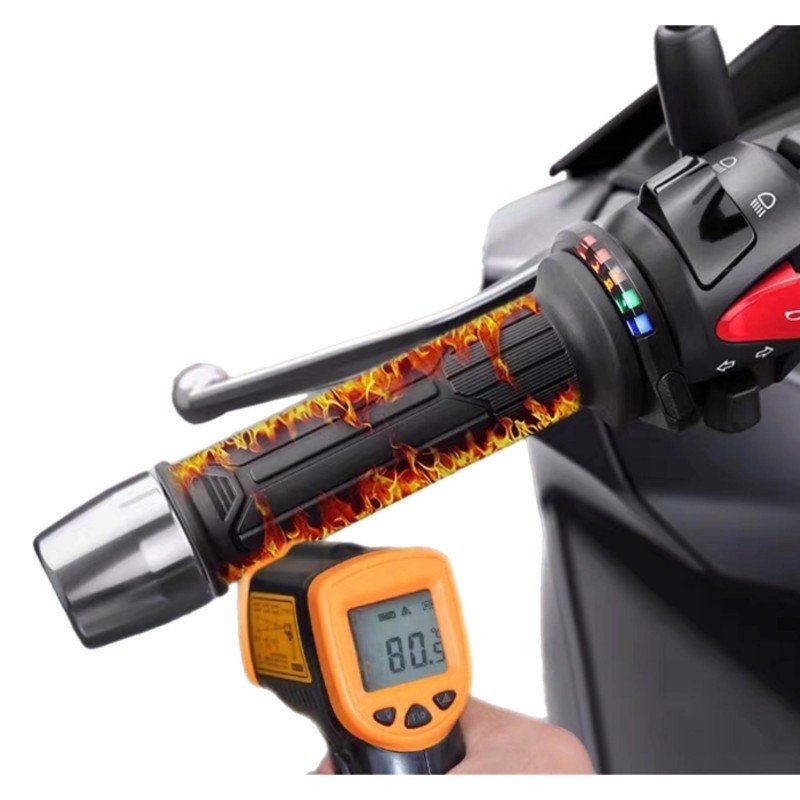
Understanding Heated Handlebars
To fully appreciate the utility of heated handlebar, it’s essential to understand how they work and the components involved in their design.
What Are Heated Handlebars?
Heated handlebar are equipped with elements that warm the grips. These grips can be either integrated into the handlebars during manufacturing or added as aftermarket accessories. When activated, heated handlebar generate warmth that travels through the material of the grips, keeping the rider’s hands warm even in frigid conditions.
How Do Heated Handlebars Work?
The heating element inside heated handlebar typically consists of electrical resistance wires. When electricity flows through these wires, they produce heat. The intensity of the heat can often be adjusted through a controller that the rider can access. This feature allows the rider to select their preferred temperature.
Common Features of Heated Handlebars
- Dual-Heat Settings: Most heated handlebar offer at least two heat settings—low and high—allowing riders to customize their warmth according to personal preference and external conditions.
- Integrated Controls: Many heated handlebar come with user-friendly controls that can be mounted on the handlebars for easier access while riding.
- Durable Construction: Designed to withstand various weather conditions and impacts, heated handlebar typically comprise robust materials like aluminum or high-strength plastics.
Benefits of Heated Handlebars
The incorporation of heated handlebar into your riding experience presents several advantages, beyond just keeping warm. Here are some critical benefits:
Enhanced Comfort
The primary benefit of heated handlebar is the comfort they provide during rides in cold weather. By keeping your hands warm, you can maintain better dexterity and control over the motorcycle or bicycle, enhancing the overall riding experience.
Improved Grip
Cold conditions can lead to numbness in the hands, which affects grip and control. Heated handlebars minimize the chances of numbness, allowing you to maintain a secure grip and operate your vehicle effectively.
Increased Safety
Riding in cold weather can be dangerous, especially if icy hands cause a loss of control. With handlebars, you decrease the risk of losing grip and improve your ability to respond to sudden circumstances. As a result, this feature enhances overall safety while riding.
Longer Riding Seasons
Heated handlebars can extend your riding season by allowing you to comfortably ride during colder months. This feature enables more consistent use of your motorcycle or bicycle throughout the year, leading to more enjoyable adventures.
Versatile Applications
Heated handlebars can be utilized on motorcycles, electric bikes, scooters, and even ATVs. This versatility means that riders across various disciplines can benefit from this useful technology.
Choosing the Right Heated Handlebars
Selecting the appropriate heated handlebars requires careful consideration of several factors. Below, we outline key elements to keep in mind when making your choice:
Compatibility
Before purchasing heated handlebars, ensure they are compatible with your specific make and model of motorcycle or bike. Some handlebars are designed as direct replacements for existing grips, while others may require additional modifications or installation kits.
Type of Heating Element
When choosing handlebars, consider the type of heating element used. Some models utilize resistive wire heating, while others may have carbon fiber layers that distribute heat more evenly. Research each option to determine the best fit for your needs.
Heat Settings
Look for handlebars with multiple heat settings. Models with adjustable temperatures allow for customized comfort based on the weather conditions and personal preferences.
Installation Process
Consider whether the handlebars require professional installation or if they offer user-friendly installation procedures. Some models come with straightforward instructions and necessary hardware for easy installation.
User Reviews
Before making a purchase, it’s wise to read user reviews and testimonials. Insights from other riders can provide you with valuable information about product performance, reliability, and durability.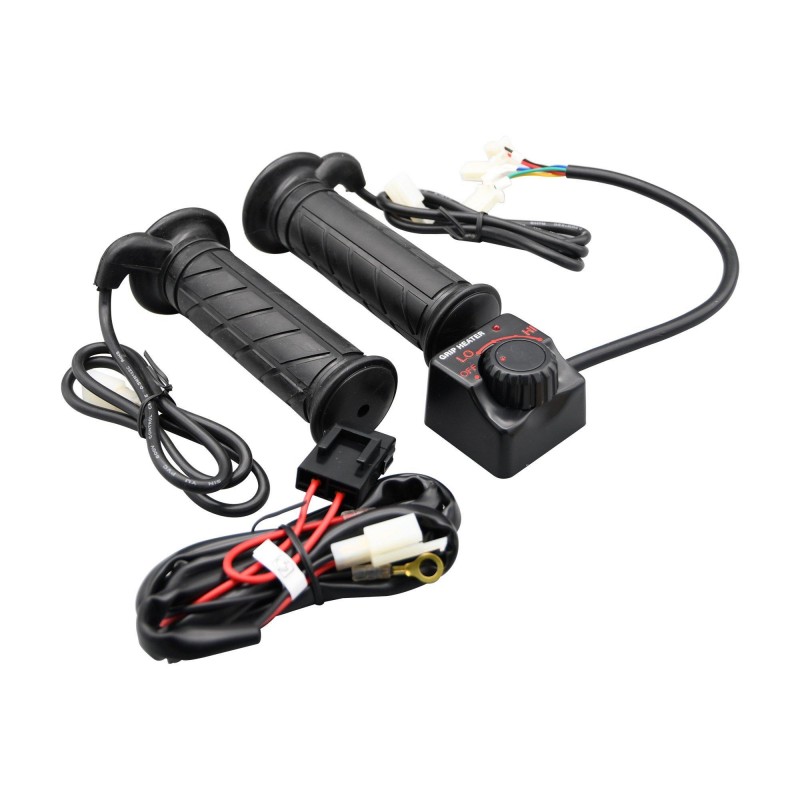
Installation of Heated Handlebars
Proper installation of heated handlebars can ensure a seamless experience while riding. Here’s a step-by-step guide on how to install handlebars effectively:
Tools Needed
Before beginning the installation process, gather the necessary tools. Generally, you will need:
- Socket wrench set
- Screwdrivers (Phillips and flathead)
- Wire strippers
- Electrical tape
- Zip ties
Step-by-Step Installation Process
- Read the Instructions: Carefully review the manufacturer’s instructions. Various heated handlebar models may have specific guidelines, so ensure that you understand the process well.
- Remove the Existing Handlebars: If you’re replacing existing handlebars, remove them by loosening the mounting bolts. Take care not to strain any wiring attached to your bike.
- Prepare the Wiring: Your heated handlebars will likely include wiring for the heating elements and an electrical connector. Prepare the wiring by stripping the ends, ensuring they are free of any insulation.
- Connect the Wiring: Connect the heated handles’ wiring to the electrical connection point on your motorcycle or bike. Follow the manufacturer’s diagrams for proper connections.
- Secure the Heat Controller: The heat controller should be easily accessible, often mounted near the throttle. Secure it using screws or zip ties to prevent it from moving while riding.
- Test the Setup: Before securing everything in place, it’s advisable to conduct a test run. Connect the battery and turn on the system to ensure the heated handlebars operate correctly under all settings.
- Reassemble the Handlebars: Once you’ve confirmed successful functionality, reattach any components you had to remove during installation. Double-check that all electrical connections are secured and organized.
- Final Inspection: Thoroughly inspect the installation to ensure that everything is firmly attached. Make sure the wiring is tucked away to avoid snags while riding.
Maintenance of Heated Handlebars
Just like any vehicle component, heated handlebars require proper maintenance to function effectively. Follow these tips to keep your heated handlebars in top condition:
Regular Inspection
Periodically check your heated handlebars for any signs of wear or damage. Inspect the wiring for frays, especially around the connection points, and replace any damaged components as necessary.
Clean the Handles
Keep the handlebar grips clean for proper functionality and improved grip. Use a damp cloth and non-abrasive cleaner to wipe down the grips without damaging the heating elements.
Protect from the Elements
If you live in a region with harsh weather, consider covering your motorcycle when parked. Exposure to rain and cold can affect not only the heated handlebars but also other electrical components.
Electrical Connections
Ensure that electrical connections are tight and secure. Loose connections can lead to malfunctioning heat settings, which can impact your riding experience.
Winter Storage
If you’re storing your motorcycle or bike for winter, protect your heated handlebars by removing any power sources and ensuring all wires are neatly secured. Disconnect the battery to prevent issues when you’re ready to ride again.
Alternatives to Heated Handlebars
While heated handlebars are an excellent option for staying warm during rides, other alternatives may also meet your needs. Consider the following options:
Heated Grips
Heated grips are an alternative to heated handlebars that provide warmth directly at the grip level. They typically have built-in heating elements and are usually more straightforward to install.
Heated Gloves
Heated gloves are a practical option to keep your hands warm without modifying your bike. Many heated glove options are available, with various heating technologies and battery capacities.
Handlebar Muffs
Handlebar muffs cover the grips while leaving your hands free to control the throttle and brakes. These insulated covers provide excellent protection against cold air, helping to keep your hands warmer while riding.
Thicker Riding Gloves
Investing in insulated and thicker riding gloves can also provide additional warmth without the need for heated equipment. Look for gloves designed for cold-weather riding to enhance comfort.
Future of Heated Handlebars in Motorcycling
As technology continuously evolves, the future of heated handlebars looks promising. Here are some trends and advancements for heated handlebars that riders can anticipate:
Increased Customization
Future heated handlebars may incorporate customizable features that allow users to adjust temperature settings via smartphone apps or integrated displays. This technological integration enhances user experience by prioritizing convenience.
Enhanced Efficiency
Advancements in heating technology, such as improved conductive materials, may lead to enhanced energy efficiency while providing quicker heating times.
Integration with Riding Gear
Heated handlebars might one day be integrated with advanced riding gear that syncs temperature control through smart systems. This innovation would provide a seamless and comfortable riding experience, particularly in extreme weather conditions.
Eco-Friendly Options
As the focus on sustainability increases, the development of eco-friendly materials and manufacturing processes for heated handlebars will likely gain traction. These options can reduce the overall carbon footprint in producing motorcycle accessories.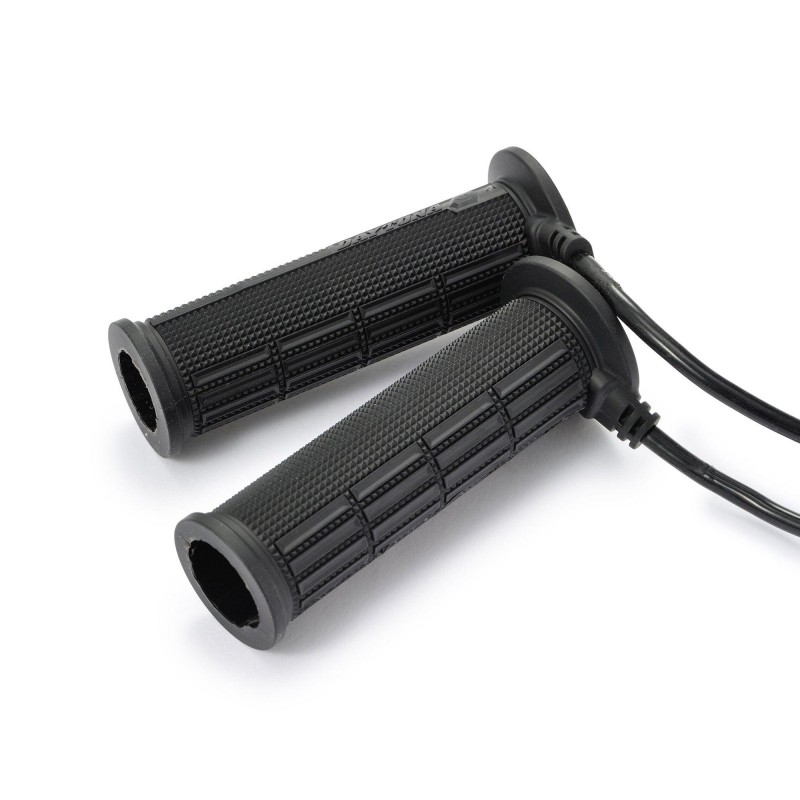
Conclusion
Incorporating heated handlebars into your motorcycle riding experience can transform how you enjoy cold-weather rides. Understanding how heated handlebars work, their benefits, and how to install and maintain them will empower you to make informed decisions about your riding setup. With advancements in technology and an ever-evolving marketplace, heated handlebars provide comfort and safety, allowing riders to tackle colder seasons with confidence.
As you consider enhancing your ride with heated handlebars, remember to assess your specific needs, explore the available options, and invest in quality products. Whether you opt for heated grips, gloves, or handlebar muffs, the goal is to ensure a comfortable and enjoyable riding experience. With the insights provided in this comprehensive guide, you can take your motorcycling adventures to new heights while staying warm and safe.
